Processing Native Foods

Food Processing Making Poisonous Foods Safe to Eat
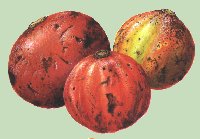 bunban
bunban 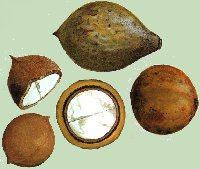 ganggi
ganggi
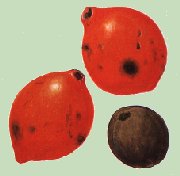 jubula
jubula
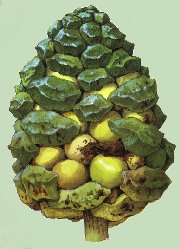 yawala
yawala
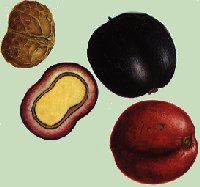 dunu
dunu
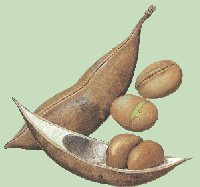 ganyjuu
ganyjuu
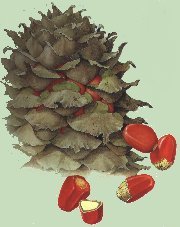 juubari
juubariFruit illustrations
© William T. Cooper 1994
Many of the most important plant foods for the Ngadjonji were large and abundant seeds which had the major disadvantage of being poisonous (as many early European explorers and settlers discovered to their great discomfort !). The Ngadjonji and other North Queensland rainforest aborigines had developed a method for treating these seeds to remove the poison and render their nutritious (if usually pretty bland-tasting) starchy contents into edible food.
The general method of processing these toxic seeds was:
- Cooking - The seeds were cooked, most commonly by steaming in an earth oven (see Fire), but sometimes by roasting in the ash of an open fire.
- Grating - The cooked seeds were then ground or grated using grooved stone graters or, particularly for ganyjuu, finely sliced with a forest-snail shell to produce a coarse meal.
- Leaching - The meal from the cooked seeds was then put in fine-mesh bags and soaked in running water for 1 to 4 days depending on species. Ganyjuu required 3-4 days leaching. This step was essential to remove the bitter poison from the seeds.
- Use - The leached coarse meal was then occasionally formed into loaves and baked on hot stones as johnny cakes. More commonly it was eaten without further cooking as a wet meal - rather like rice pudding in texture.
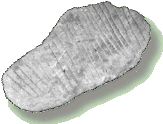 Grooved stone
grater
Grooved stone
grater 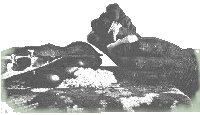 Slicing ganyjuu
(Black Bean)
Slicing ganyjuu
(Black Bean) 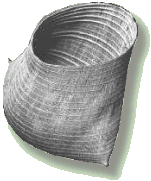 Basket for leaching meal
Basket for leaching meal 
